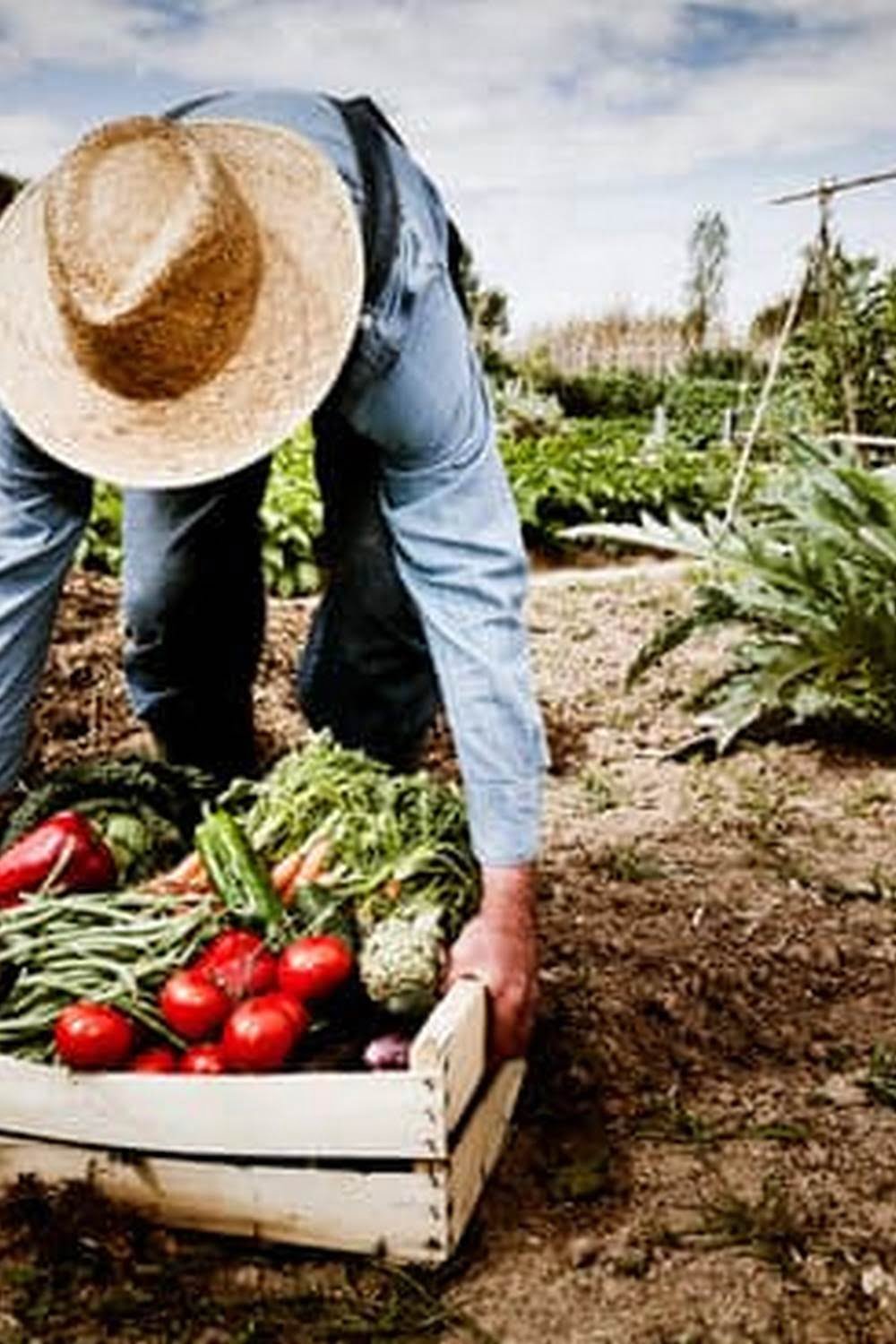Are you looking to create a bountiful and thriving vegetable garden in Australia? Look no further. In this article, we will explore the essential elements of Gardening Australia Vegetable Garden Design.
Whether you are a novice or experienced gardener, understanding the unique climate and soil conditions in Australia, selecting the right vegetables, maximizing space, and incorporating sustainable practices are crucial for a successful vegetable garden. We will delve into the tips and tricks for designing and maintaining a productive vegetable garden specific to Australian conditions.
Australia’s diverse climate and soil conditions play a significant role in determining the success of a vegetable garden. From the tropical north to the temperate south, different regions require specific considerations when it comes to choosing vegetables and planning your garden layout. Understanding these factors will be key to creating a thriving vegetable garden that yields an abundance of fresh produce.
Selecting the right vegetables for your Australian vegetable garden is essential for its success. We will discuss which vegetables thrive in different regions of Australia as well as how to best care for them.
Additionally, we will explore techniques for maximizing space in small gardens to ensure that even limited areas can produce an impressive harvest. Stay tuned as we provide valuable insights into proper watering and irrigation methods, sustainable gardening practices, pest and disease management, companion planting strategies, as well as real-life case studies showcasing successful vegetable garden designs from across Australia.
Understanding the Climate and Soil Conditions in Australia for Vegetable Gardening
Australia’s diverse climate and soil conditions pose unique challenges for vegetable gardening. Understanding these factors is crucial for successful garden design. In Australia, the climate ranges from tropical in the north to temperate and arid in the central regions, which greatly impacts the types of vegetables that can be grown. Additionally, the soil types vary from sandy loam to clay, with differing levels of fertility and drainage.
In Northern Australia, where tropical conditions prevail, vegetables such as tomatoes, eggplant, and chili peppers thrive due to the abundant sunshine and warm temperatures. In contrast, in southern regions with cooler climates, popular choices include carrots, broccoli, and cauliflower. It is important for gardeners to research their specific region’s climate and soil conditions before selecting vegetables for their garden.
Soil quality is another crucial factor in vegetable gardening. Many parts of Australia have nutrient-poor soils that require amendment with compost or organic matter to improve fertility. Additionally, water retention can be a challenge in some areas, so incorporating mulch into the soil can assist with moisture retention during dry spells.
The key to successful vegetable gardening in Australia lies in understanding the local climate and soil conditions. By selecting suitable vegetables and amending the soil as needed, gardeners can create thriving gardens that yield bountiful harvests year-round.
| Climate Region | Recommended Vegetables |
|---|---|
| Tropical North | Tomatoes, Eggplant, Chili Peppers |
| Temperate South | Carrots, Broccoli,Cauliflower |
Selecting the Right Vegetables for a Successful Garden in Australia
When it comes to designing a successful vegetable garden in Australia, selecting the right vegetables is crucial. The climate and soil conditions vary across the country, so it’s important to choose vegetables that are well-suited to the specific region. Here are some key factors to consider when selecting the right vegetables for your Australian garden:
- Climate: Consider the climate of your region, whether it’s tropical, subtropical, temperate, or arid. This will determine which vegetables will thrive in your garden.
- Soil type: Take into account the soil type in your area – whether it’s sandy, clayey, or loamy. Certain vegetables prefer specific soil types, so it’s important to choose varieties that will grow well in your soil.
- Water requirements: Australia is known for its hot and dry climate in many regions. Select vegetables that are drought-tolerant and require minimal water if you live in a dry area.
In Australia, some popular vegetable choices that tend to do well across various regions include tomatoes, zucchinis, carrots, spinach, kale, and lettuce. These versatile vegetables can be grown in different climate zones and are relatively easy to cultivate.
However, it’s also essential to explore native Australian edible plants such as warrigal greens (also known as New Zealand spinach) and finger limes. These indigenous plants have adapted to the Australian environment and can provide a unique addition to your vegetable garden.
Ultimately, when selecting the right vegetables for your Australian garden, it’s crucial to research and understand the specific growing requirements of each plant. By choosing varieties that are well-suited to your local climate and soil conditions, you’ll set yourself up for a successful harvest.
Tips and Tricks for Maximizing Space in a Small Vegetable Garden
When it comes to vegetable garden design in Australia, maximizing space is essential, especially for those with limited gardening space. Here are some tips and tricks to make the most out of a small vegetable garden:
- Vertical Gardening: Utilizing vertical space is key in a small garden. Consider using trellises, stakes, or wall-mounted planters to grow vining vegetables such as cucumbers, pole beans, and tomatoes. This not only saves horizontal space but also allows for better air circulation and sunlight exposure.
- Intensive Planting: Instead of traditional row planting, opt for intensive planting methods such as square foot gardening or interplanting. This involves planting vegetables close together in a grid pattern to maximize yields while minimizing wasted space.
- Container Gardening: For those without a traditional garden bed, container gardening is a great option. Use pots, hanging baskets, or even repurposed containers like buckets or wooden crates to grow herbs, lettuce, peppers, and other compact vegetables.
In addition to these strategies for maximizing space, it’s important to consider soil health and fertility. Utilizing raised beds can improve soil drainage and warmth while also providing clear boundaries for plants. Additionally, incorporating organic matter like compost and mulch can help maintain soil moisture and provide essential nutrients for vegetable growth.
Finally, succession planting is an effective technique for ensuring a continuous harvest from a small space. By carefully planning out the timing of different vegetable crops, gardeners can make the most of their available area throughout the growing season.
By implementing these tips and tricks for maximizing space in a small vegetable garden design within Australia’s unique climate and soil conditions, even those with limited outdoor areas can enjoy bountiful harvests of homegrown produce.
Importance of Proper Watering and Irrigation for Vegetable Gardens in Australia
Proper watering and irrigation are essential components of successful vegetable garden design in Australia. Given the country’s diverse climate, it is crucial to understand the specific needs of different vegetables and how best to provide them with adequate moisture. In this section, we will explore the importance of proper watering and irrigation for vegetable gardens in Australia, as well as some tips for effectively managing this aspect of garden design.
Australia’s climate varies widely, from the tropical regions in the north to the temperate climates in the south. This means that different areas have different watering needs for vegetable gardens. It is important to take into account factors such as average rainfall, temperature fluctuations, and soil drainage when planning an irrigation system for your garden.
Incorporating sustainable watering practices into your vegetable garden design can also help conserve water and reduce your environmental impact. Consider installing a drip irrigation system or collecting rainwater to use for watering. Additionally, mulching around plants can help retain soil moisture and minimize water evaporation. By adopting these eco-friendly practices, you can ensure that your vegetable garden is not only productive but also environmentally responsible.
It is essential to monitor the moisture levels in your soil regularly to avoid overwatering or underwatering your vegetables. Different types of vegetables have varying water requirements, so it is important to tailor your watering schedule accordingly. Consulting local gardening resources or experts can provide valuable insights into the specific needs of popular vegetables grown in Australia. By understanding and implementing proper watering and irrigation techniques, you can create a thriving vegetable garden that yields bountiful produce throughout the year.
| Climate | Watering Needs |
|---|---|
| Tropical regions | Regular and consistent watering due to high temperatures |
| Temperate climates | Varied watering needs depending on seasonal changes |
| Arid regions | Efficient water management due to low rainfall levels |
Incorporating Sustainable and Eco-Friendly Practices Into Your Vegetable Garden Design
Utilizing Water-Saving Techniques
One of the most crucial aspects of sustainable gardening in Australia is water conservation. With the frequent droughts and water restrictions in many parts of the country, it’s essential to implement water-saving techniques in your vegetable garden.
Consider installing a drip irrigation system to deliver water directly to the roots of your plants, minimizing waste through evaporation and runoff. Additionally, collecting rainwater in barrels or tanks can provide a free and sustainable source of water for your garden during drier periods.
Composting and Mulching
Another key component of sustainable gardening is minimizing waste and improving soil health through composting and mulching. Creating a compost bin for your kitchen scraps and garden clippings not only reduces landfill waste but also produces nutrient-rich compost that can be used to fertilize your vegetables naturally. Furthermore, mulching around your plants helps retain moisture in the soil, suppresses weeds, and adds organic matter as it breaks down.
Choosing Organic Pest Control Methods
Incorporating eco-friendly pest control methods into your vegetable garden design is essential for maintaining a healthy ecosystem. Avoiding chemical pesticides that can harm beneficial insects and wildlife is crucial. Instead, consider using natural remedies like companion planting, introducing pest-eating predators such as ladybugs or lacewings, or creating physical barriers like netting to protect your crops from common pests. By choosing these organic methods, you can effectively manage pests while promoting biodiversity in your garden.
By incorporating these sustainable practices into your vegetable garden design, you can create an environmentally-friendly space that thrives with minimal impact on the surrounding ecosystem. The principles of sustainability are integral to successful gardening in Australia and contribute to the long-term health and productivity of your vegetable garden.
Pest and Disease Management for Vegetable Gardens in Australia
When it comes to vegetable gardening in Australia, one of the biggest challenges that gardeners face is dealing with pests and diseases. In order to maintain a healthy and thriving garden, it is important to be proactive in managing these potential threats to your plants. Here are some essential strategies for pest control in your Australian vegetable garden.
Identifying Common Pests and Diseases
Before you can effectively manage pests and diseases in your vegetable garden, it’s crucial to be able to identify the most common culprits. In Australia, some of the most prevalent pests include aphids, snails, caterpillars, and fruit flies. Common diseases that affect vegetables in Australia include powdery mildew, blight, and blossom end rot. By familiarizing yourself with the signs and symptoms of these issues, you can take early action to prevent them from spreading.
Natural Pest Control Methods
In line with the gardening Australia vegetable garden design ethos, many gardeners prioritize natural and eco-friendly methods for controlling pests and diseases. One popular approach is companion planting – strategically placing certain plant species together to deter harmful insects or attract beneficial ones. Additionally, introducing predator insects such as ladybugs or lacewings can help keep pest populations in check. Another effective strategy is using organic pesticides derived from natural sources like neem oil or diatomaceous earth.
Maintaining Good Garden Hygiene
Proper maintenance and cleanliness in your vegetable garden can also go a long way in preventing pest infestations and disease outbreaks. Regularly remove any dead or diseased plant material to discourage the spread of pathogens. Implementing good crop rotation practices can also help break pest and disease cycles by interrupting their preferred host plants’ availability.
By taking a proactive approach to pest and disease management in your Australian vegetable garden, you can ensure that your plants remain healthy while maximizing their growth potential throughout the growing season.
The Role of Companion Planting in a Successful Australian Vegetable Garden
Companion planting is a valuable aspect of vegetable garden design in Australia. This gardening technique involves growing different plants together to maximize the benefits for each other. One of the main advantages of companion planting is natural pest control, as certain plants can repel harmful insects or attract beneficial ones. In addition, some companion plants can improve soil health by fixing nitrogen or providing ground cover to prevent weed growth.
In the unique climate and soil conditions of Australia, it is important to carefully select companion plants that will thrive together and provide mutual benefits. For example, pairing tomatoes with basil can enhance the flavor and growth of both plants. Similarly, planting carrots alongside onions can help deter pests and improve overall crop yield. By incorporating companion planting into your vegetable garden design, you can create a more balanced and sustainable ecosystem for your plants to flourish.
Many traditional Indigenous farming methods in Australia also incorporate companion planting techniques, making it an integral part of Australian horticultural history. Incorporating these age-old practices into modern vegetable garden designs not only improves plant health and productivity but also honors the rich agricultural heritage of the country. As awareness of sustainable gardening practices continues to grow, more Australians are embracing the principles of companion planting in their own vegetable gardens.
Case Studies of Successful Vegetable Garden Designs in Australia
Australia is a vast and diverse country with varying climates, soil conditions, and landscapes. When it comes to vegetable garden design, understanding these factors is essential for success. With a wide range of options available, it can be challenging to decide what will thrive in your specific location. However, several successful vegetable garden designs in Australia serve as great examples to draw inspiration from.
In regions with hot and dry climates like the Outback, successful vegetable gardens often incorporate drought-resistant plants such as cherry tomatoes, zucchini, and eggplant. These gardens are designed with efficient irrigation systems to ensure the plants receive enough water without wastage. By utilizing raised beds or containers, these gardens maximize space while also improving drainage – a key consideration for areas prone to heavy rainfall followed by long dry spells.
Coastal regions in Australia often face challenges such as salt-laden winds and sandy soils. Successful vegetable garden designs in these areas frequently feature windbreaks and soil amendments to create a more hospitable environment for plants like silverbeet, carrots, and lettuce. Additionally, incorporating mulch into the design helps retain moisture and improve soil structure.
In cooler climates such as Tasmania or the mountainous regions of Victoria, successful vegetable garden designs prioritize cold-hardy crops like kale, Brussels sprouts, and winter squash. These gardens may also include elements such as hoop houses or row covers to extend the growing season and protect plants from frost. Understanding these regional variations is crucial when planning a vegetable garden design in Australia.
With careful consideration of regional differences in climate and soil conditions, aspiring vegetable gardeners can learn valuable lessons from successful case studies across Australia.
Resources and Tools for Planning and Designing a Vegetable Garden in Australia
In conclusion, creating a successful vegetable garden in Australia requires careful consideration of the local climate and soil conditions. By understanding the specific needs of the region, gardeners can select the right vegetables and implement effective gardening techniques to maximize their space and yield a bountiful harvest.
Proper watering and irrigation are essential for the health of a vegetable garden in Australia, especially in the face of the country’s variable weather patterns. By incorporating sustainable and eco-friendly practices into their garden design, Australian gardeners can minimize their environmental impact while reaping the benefits of a thriving vegetable patch.
Pest and disease management are also crucial aspects of vegetable gardening in Australia. Through companion planting and other natural methods, gardeners can maintain a healthy balance in their gardens without relying on harmful chemicals. This holistic approach to gardening not only benefits the environment but also contributes to the overall success of the garden.
As evidenced by various case studies, successful vegetable garden designs in Australia showcase both creativity and practicality. By utilizing the resources and tools available for planning and designing a vegetable garden in Australia, enthusiasts can embark on their own horticultural journey with confidence. With proper research, thoughtful planning, and dedicated effort, anyone can cultivate a flourishing vegetable garden that yields delicious produce year after year.
Frequently Asked Questions
What Is the Best Layout for a Veggie Garden in Australia?
The best layout for a veggie garden in Australia depends on various factors such as the climate, sunlight, and available space. It’s important to consider the orientation of the garden beds to maximize sunlight exposure and airflow for optimal growth.
How Do I Plan a Garden Layout in Australia?
Planning a garden layout in Australia involves assessing the climate and soil conditions in your specific region. It’s crucial to choose suitable vegetable varieties that thrive in the local climate. Additionally, consider factors like water availability and potential pests when planning your garden layout.
How Do You Make a Vegetable Garden in Australia?
Making a vegetable garden in Australia starts with preparing the soil by adding compost or organic matter to improve its quality. Choose a sunny location for your garden and select vegetable varieties that are well-suited to the Australian climate. Regular watering and pest management are also essential for a successful veggie garden.

If you’re looking to get into vegetable gardening, or are just looking for some tips on how to make your current garden better, then you’ve come to the right place! My name is Ethel and I have been gardening for years. In this blog, I’m going to share with you some of my best tips on how to create a successful vegetable garden.





